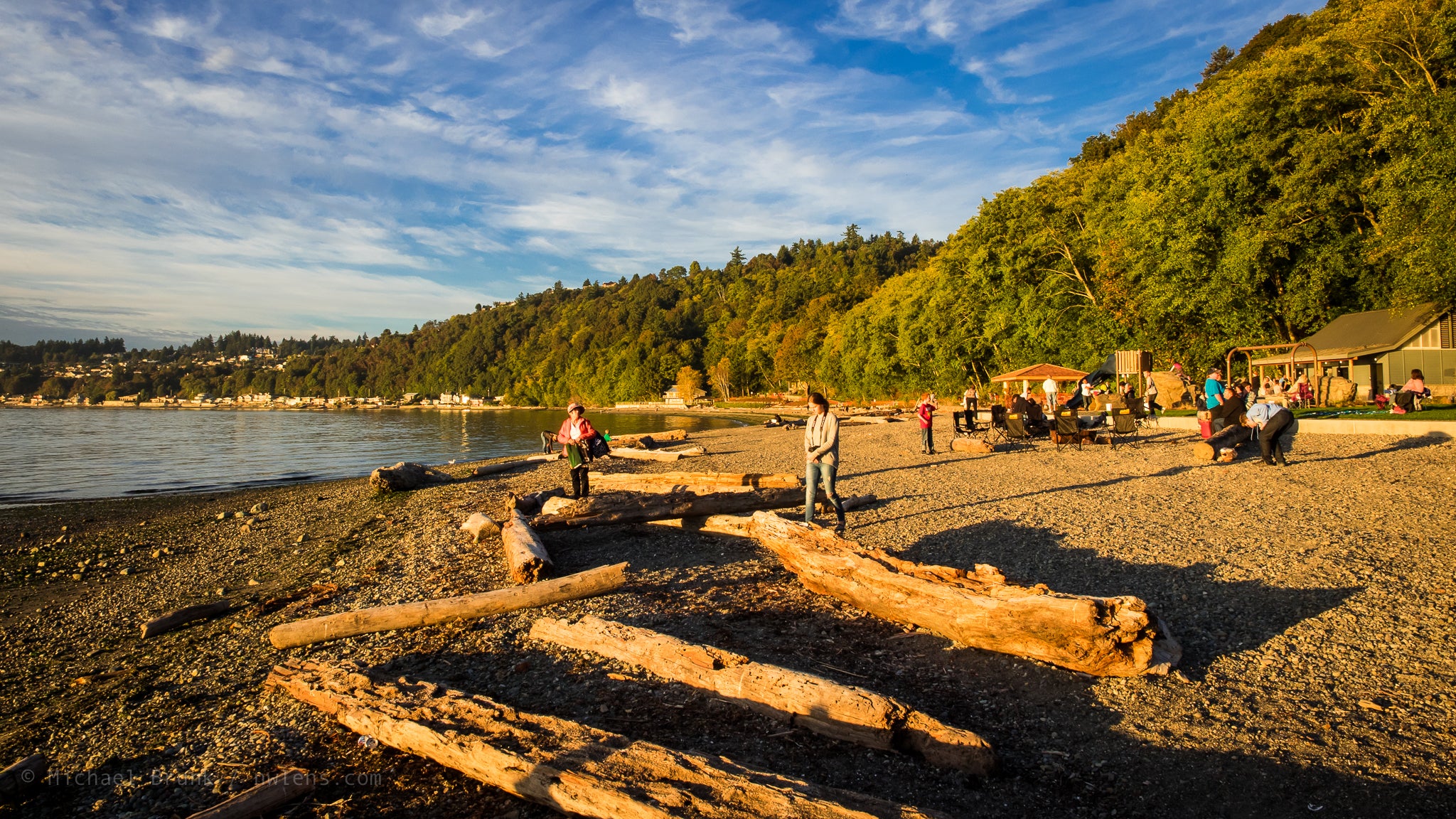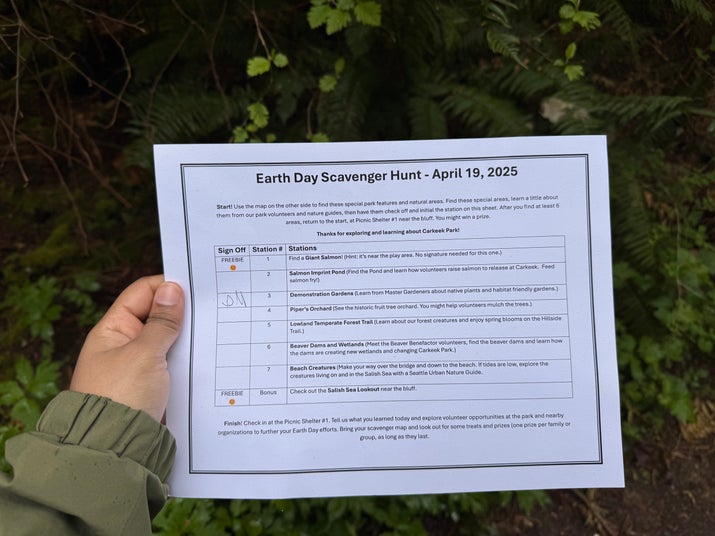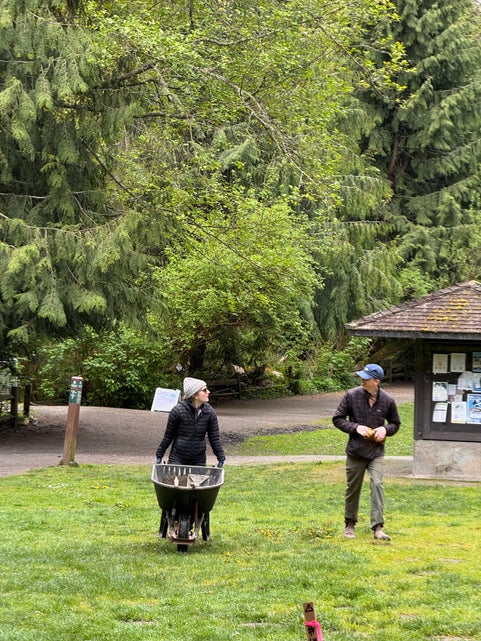
1
Story Information
2
Share
Share Link
Spread the word on your favorite platforms.

Samriddhi Simlai
April 2025

On a crisp Saturday morning in April, something quietly powerful unfolded at Carkeek Park in Seattle. There were no giant banners or big stages. Instead, dozens of volunteers — families, students, retired teachers, nonprofit staff — wandered forest trails with clipboards and smiles, signing off stations tucked near beaver dams, blooming gardens, and the quietly rushing Piper’s Creek.
It was the Earth Day Scavenger Hunt, but more than that, it was a masterclass in how to mobilize a community for long-term conservation.
For nonprofit fundraisers and engagement strategists, it’s worth studying not just because it was successful — but because it was designed right. With intention. With equity. And with a whole lot of heart.
Here’s what Carkeek Park’s Earth Day event teaches us about driving real, sustained community engagement — and how to apply these lessons to your own nonprofit programming.

The genius of the Earth Day scavenger hunt was that it didn’t feel like a lecture. It felt like play. Volunteers were given clipboards with 10 stations to visit — from the Salmon Imprint Pond to the Demonstration Gardens, each marked by a sign, an activity, or a smiling volunteer with a pen.
At every stop, you learned something tactile: how salmon are hand-fed by schoolkids until they "imprint" and return years later. Why beavers are considered natural engineers and their dams reduce urban flooding. What plants are native to this part of the Puget Sound watershed — and how they're being reintroduced to rebalance the forest.
Tactical takeaway:
If you’re planning a volunteer event, ask: How can we make people feel like explorers instead of attendees?
Self-guided journeys, interactive checklists, or map-based programs (even with low-fi tools like stamps or stickers) invite curiosity while allowing people to move at their own pace. This improves retention — both cognitive and community.

One of the reasons this event worked was that it wasn’t just for the usual volunteer demographic. Children, grandparents, casual walkers, dog parents, local teens — all were welcome, and the activities were designed accordingly. There were tactile things to do, like building tiny salmon habitats with natural materials. There were photo ops near signs that explained what "imprinting" meant. There were QR codes for deeper dives.
By decentralizing the idea of what participation looks like, Carkeek lowered the barrier to entry — and made more people feel like stakeholders in the park's future.
Tactical takeaway:
Don’t just recruit volunteers — invite participants. Design moments that reward curiosity and offer multiple levels of engagement. Someone might not be ready to pull ivy or plant trees, but they’ll take a quiz, join a walk, or post a story online.
What truly stood out about Carkeek’s Earth Day wasn’t just what happened that day, but what it pointed to. Each station connected back to one of the park’s year-round programs:
CWCAP (Carkeek Watershed Community Action Project) leads the salmon education and fry feeding initiative.
STARS (Serving the Trails and Restoration Society) manages trail upkeep and erosion monitoring.
Friends of Piper’s Orchard keeps heirloom apple varieties alive while restoring this rare urban orchard.
The Demonstration Garden teaches composting, permaculture, and sustainable growing in collaboration with Tilth Alliance.
Tactical takeaway:
Use your events to tell a bigger story about your organization’s work. Think of each event not as a standalone activation, but as an onboarding moment into deeper impact.
The Earth Day celebration at Carkeek was beautifully designed — immersive, educational, and joyfully community-led. The next step? Capturing and sharing the story beyond the day.
While the experience lived vividly in the moment, imagine what’s possible when those stories — of salmon feeding, habitat restoration, beaver education — are documented and shared by the very people who lived them.
That’s where CauseCircle comes in.
CauseCircle makes it easy for volunteers to post stories from the field, tag causes and nonprofits, and build a shared digital narrative of impact. For nonprofits, it becomes a living archive of engagement — one that builds credibility with funders, excites future volunteers, and deepens public trust.
Engage your volunteers to share Stories:
Claim your free CauseCircle profile today >
Tactical takeaway:
Build storytelling into your engagement strategy. Use a platform like CauseCircle to empower your volunteers to become storytellers — turning one-day events into lasting public proof of purpose.
Carkeek Park is 216 acres of woods, wetlands, beaches, and public programming. But more than that, it’s proof that when you center community, curiosity, and care, you can mobilize people around a shared cause — and keep them coming back.
For nonprofits looking to deepen engagement, build awareness, and strengthen fundraising pipelines through local action, the Earth Day model at Carkeek isn’t just inspiring. It’s replicable.
🧭 Learn more about their programs, volunteering opportunities — or borrow a few playbook pages for your own: CarkeekPark.org

By Samriddhi Simlai
Samriddhi or Sam is a Seattle-based marketing professional who loves to be curious and find stories in data. Samriddhi enjoys chats about mission-driven tech, product, growth and coffee. Say hi at sam@causecircle.org. Causes Sam is passionate about: Health Equity, Climate, DEI, Art & Culture Preservation